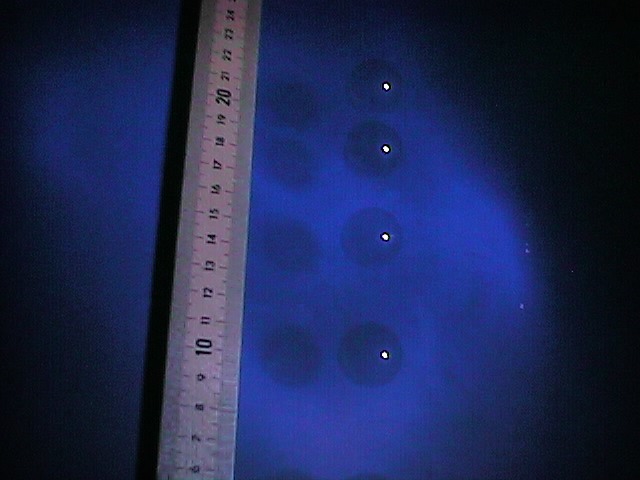|
Home
Pros & Cons
Applications
Using
Images in Education
Animations
Panoramas
15 sec video
Scopes & Lenses
Macro
ESE
ESOL
Science Lab
Writing Applications
Math Applications
Lessons
Articles
Fun Projects
DrsCavanaugh
 |
|
Experimentation
and the Digital Camera
Digital images can be used as effective tools for students
in lab situations.
Scenario: Strobe photography of motion
Your students are participating in a motion lab. The
students will be observing horizontal motion across a plane
and falling bodies. Traditionally such an experiment would
involve the use of tap-timers and some maybe some Polaroid
photography (which would then have to be copied and
enlarged, although getting the right film and finding Polaroid cameras has become an issue since they went bankrupt). Instead you can use a mobile device's digital camera and a good
strobe. This way, each student can do his or her own motion
experiment and collect imaging data and then analyze the
images to calculate linear and falling motion. By using a smart phone's digital camera, it becomes affordable for each student to
have images of the experiment. Each student or group performs
the lab, taking a strobe photo (about 2000-3000 fpm [flashes per minute] with their camera flash turned off) of the
motion as it occurs. A low light level in the room is used;
total dark is not necessary. Objects are moved in the
foreground with a ruler (a regular meter stick works well; no
special black and white ruler is needed) and dark material in
the background. Through a USB connection, the images are
immediately transferred to a computer and made available
through the school's network. Each student prints out the
images on paper and makes the measurements on the lab sheet
(images automatically to scale) and performs individual
calculations and analysis.
| Images can be used todisplay lab
setup. The images could be put onto
overheads, lab instruction sheets, or large screen
display as part of the pre-lab. |
 |
| Images can be collected during the lab to be used
for documentation
of completion and for inclusion in the student's lab
report. The image can give the student an object to
focus the report on and become a component of the
student's portfolio. |
 |
| Take images to use as a pre-lab class
calculation/analysis object,
display an image by projecting (overhead, TV/Video,
video projector), and perform analysis. The image can
also be used to show the approximate standard for
students' own images. |
 |
| By using the strobe you can capture a
still image that displays motion. It is even possible to
capture the
motion occurring in two dimensions
as the falling body moves across. Students can use the
calculations from the falling data to calculate the velocity in
the other dimension. |

|
| A picture of of the experiment can be
used to take the students through the step by step
analysis and calculations of their own
images. Project an image then explain to the students
how to measure and analyze their own images. |

|
Hold your mouse over each step to get
directions while it changes the picture above
   |
- Use the digital camera to create your own virtual
dissections.
-
Take your own time lapse photography and then combine into
digital video/animation.
-
Document life cycles.
-
Collect image sequences of long term events, such as changing
shadows, sun zenith position, stellar motion, and other
seasonal changes.
-
Use the digital camera for a live display of dissection, owl
pellets, or crystal formation that would otherwise be
difficult to display to a group.
-
Use the digital camera with scientific tools such as
telescopes and microscopes for documentation and sharing.
-
Collect wave motion or stream table video.
-
Take before and after pictures for analysis of stress points,
from objects that students construct (bridge building, etc.)
|